In the racing segment, the range of Starboard windfoils has undergone a major overhaul. The number of performance foils has been reduced to 2, with the carbon mast completely renewed for both foils. And an update has been made to the Evolution fuselages introduced last year. We have tested both foils extensively. Read below our experiences with the Starboard Slalom foil MKII and the Starboard Race foil MKII. But first we will go a little deeper into the changes in the carbon masts and the fuselages MKII.
Starboard carbon mast Evolution MKII
The shape of Starboard’s carbon masts has not changed since its introduction in 2017. With the Starboard Evolution MKII mast, Starboard is creating a completely new carbon mast. The profile is more streamlined with the trailing edge being much sharper and the leading edge is also noticeably sharper. In addition, the mast is at a different angle in the board, 90º instead of 87º. As a result, the fuselage/wingset is +/- 4.2 cm further forward as standard. The mast is only available with a length of 95 cm as a C400 and C600 variant.
The ‘base’ of the mast, where the mast goes into the fuselage, has become slightly wider. As a result, the torsional stiffness should be better, compared to the previous generation of masts. Finally, we noticed that the plastic spacer at the bottom of the mast has disappeared. The masts look very sleek and well finished, better than the masts of the past 2 years.
Starboard fuselage Evolution MKII
There are 3 new Starboard EVO MKII fuselages. The 99 cm, the 109 cm and 120 cm. The 99 cm is somewhat similar to the 105 cm Evolution MKI and the 109 cm is the same in configuration as the 115 cm Evolution MKI. The fuselages have become slightly shorter. But because the back wing protrudes at the rear, the distance between the front and back wing has remained the same with the 99 cm and 109 cm fuselages compared to the old EVO fuselages.
The front part of the fuselage has not changed. As a result, you can still use all Starboard Evolution front wings on the MKII fuselages. The rear part of the fuselage is much more streamlined, with the connection of the back wing completely changed (left 2 images). Only the new Starboard SLR back wings MKII fit on the new fuselages.
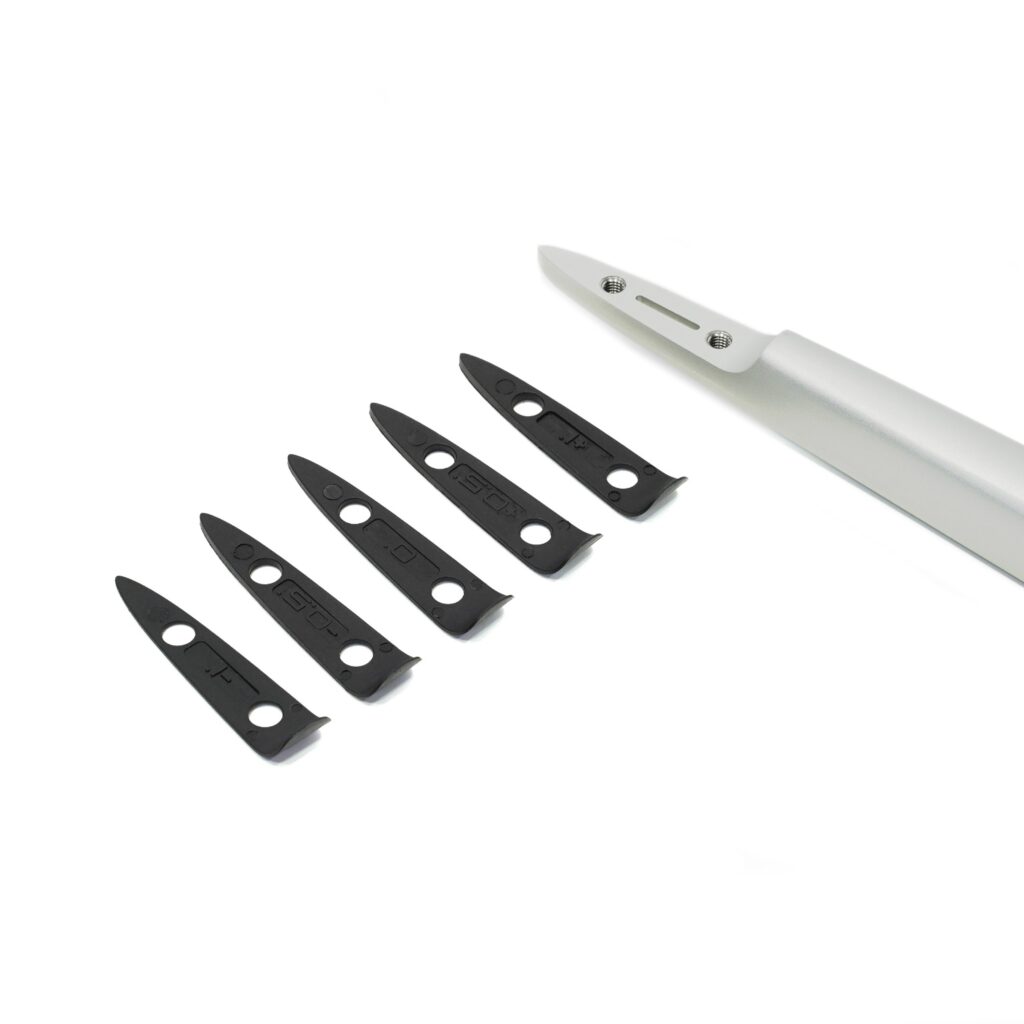
New spacers for MKII
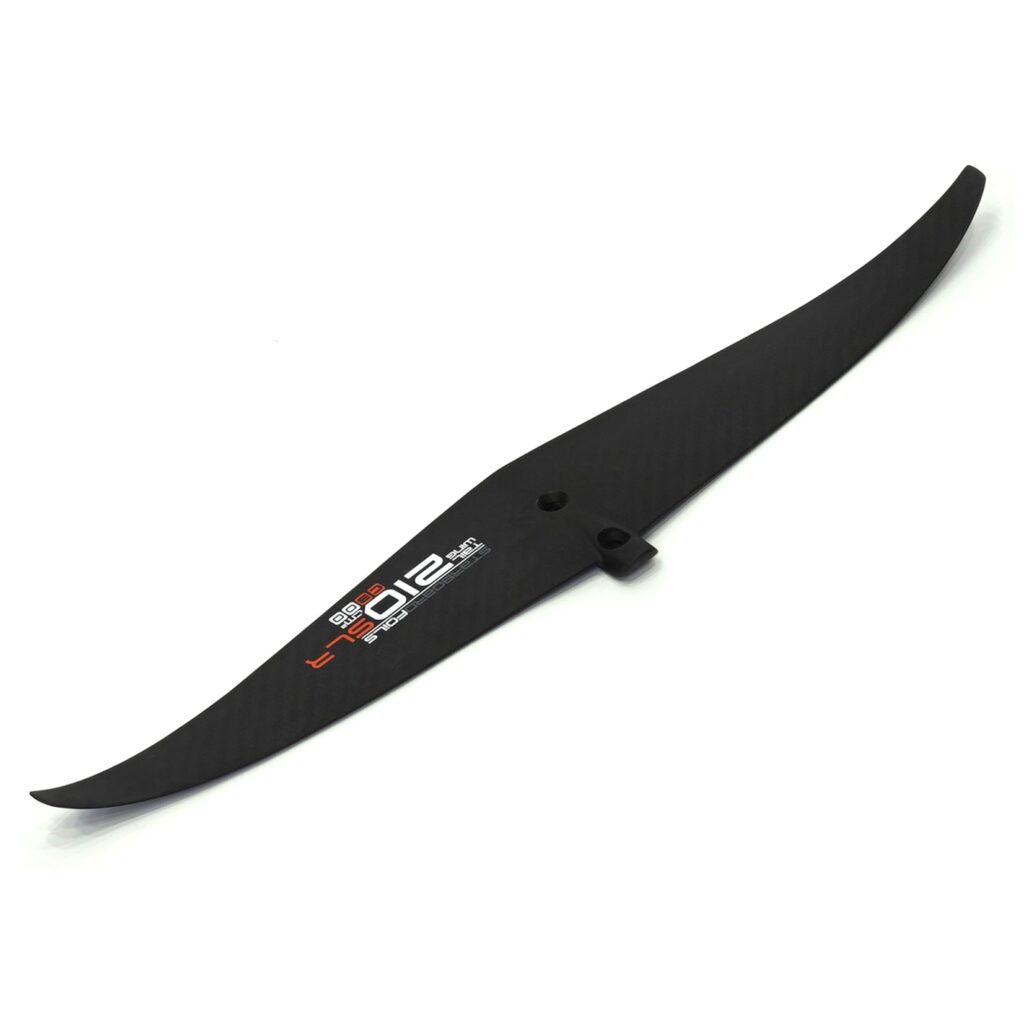
MKII SLR back wings
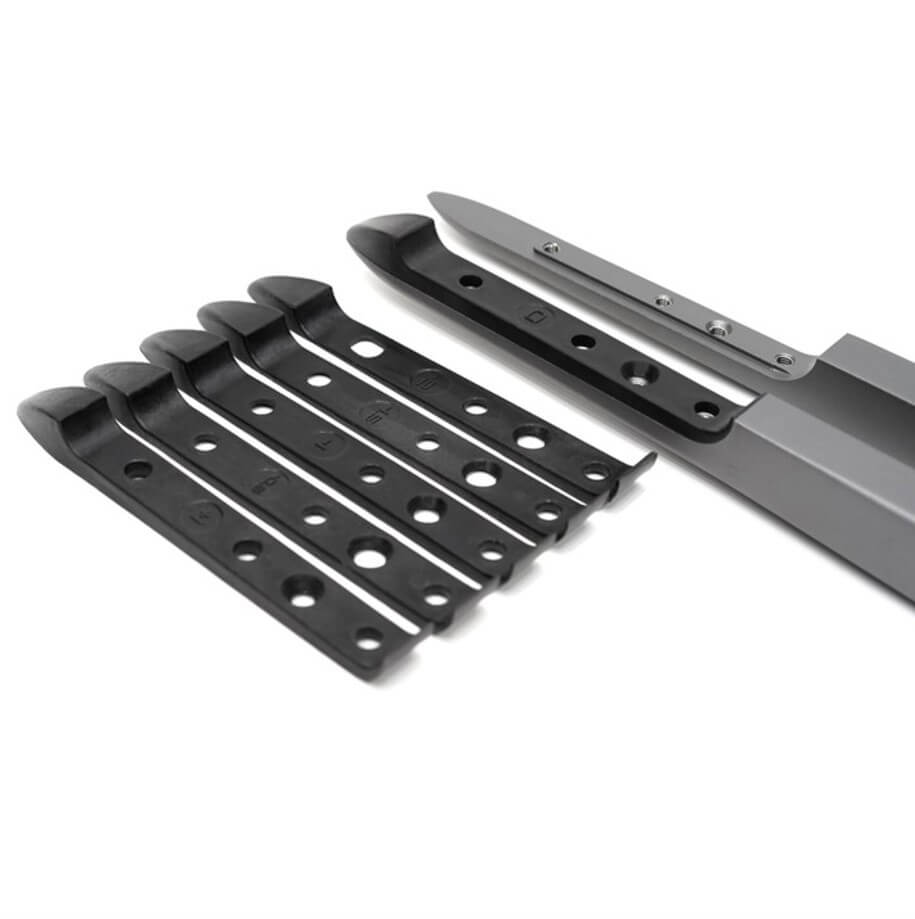
Old spacer set
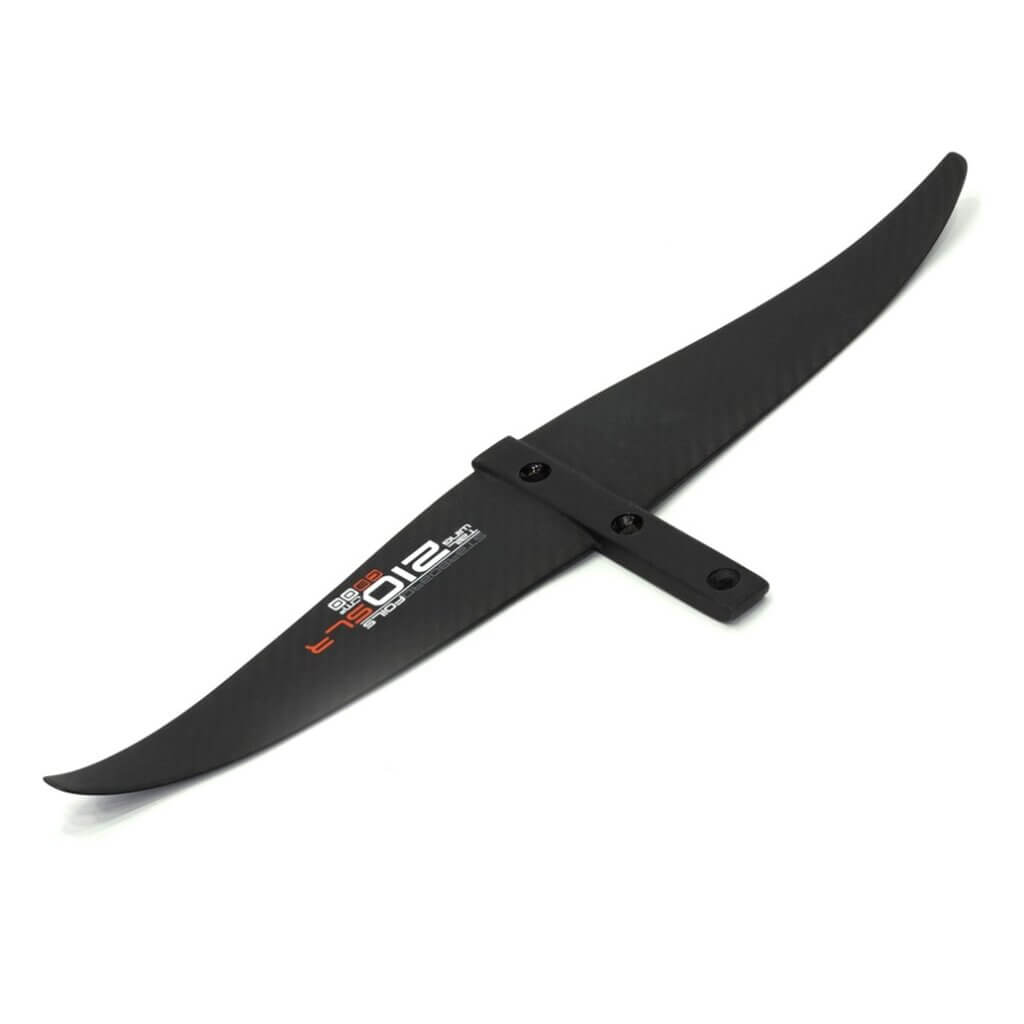
MKI SLR wings
The back of the fuselage is not only much thinner, but now the back wing protrudes, instead of .dat the plastic spacer still protrudes about 3 cm behind the back wing. We think this upgrade looks very neat. We also see that Starboard has clearly taken a step in the finish and suitability of the parts. A set of 5 spacers (-1, -0.5, 0, +0.5 and +1) is supplied as standard with the fuselages to trim the back wing. The new Starboard MKII Evo fuselages also fit the older carbon and aluminum masts.
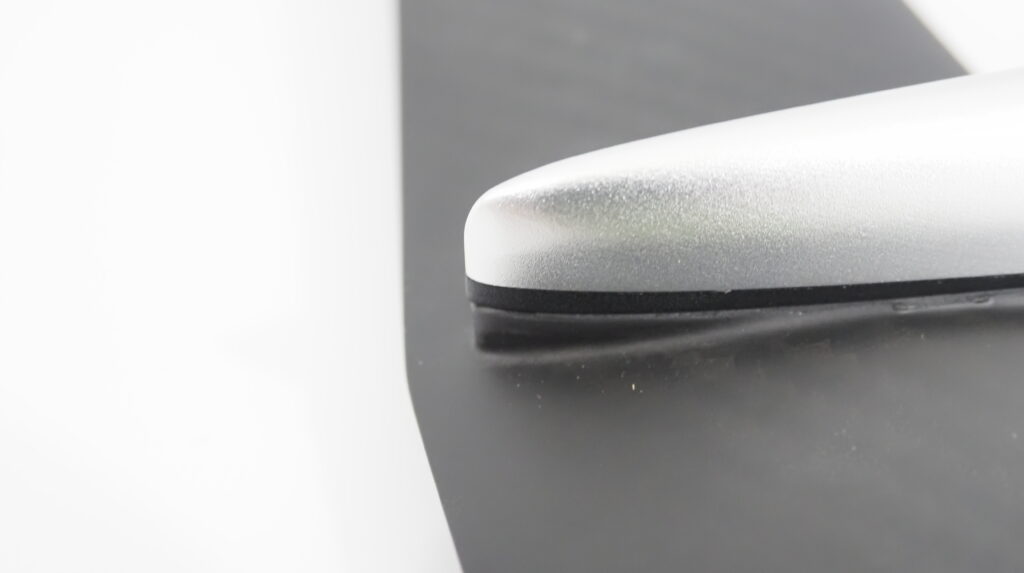
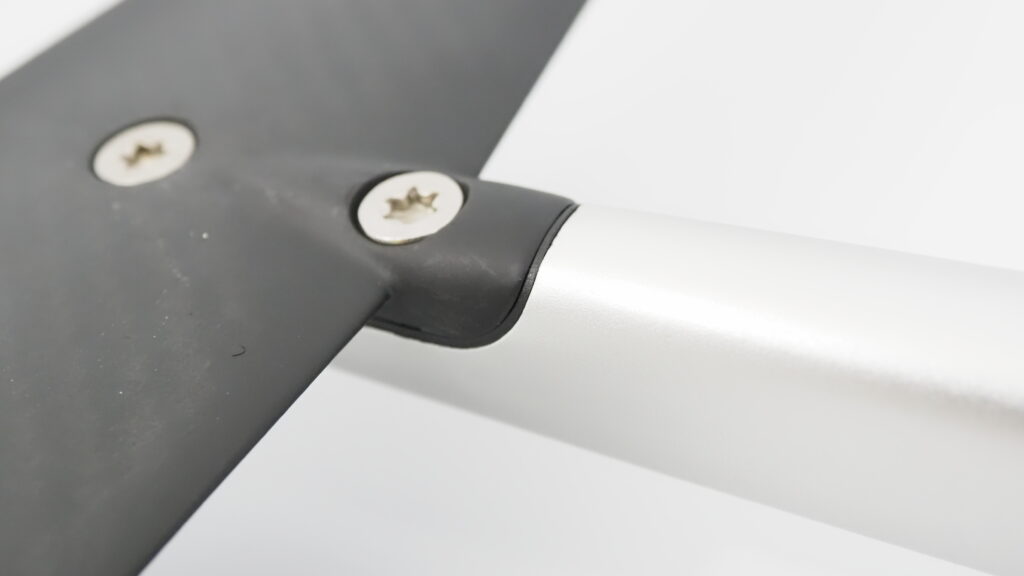
Starboard Slalom foil MKII
Carbon mast C400 95 cm 90 degrees | Fuselage 99 cm MKII | Front wing SLR 560 | Back wing SLR 210 MKII | Price: € 2.999,-
The new Starboard Slalom foil is equipped with the now well-known SLR wings, which we have already written extensively about in 2022. Only the connection of the SLR back wings has been adapted for the new EVO MKII fuselages. When mounting the back wings, it is noticeable that the back wings and spacers fit very neatly. With the old system, we sometimes saw that the spacers were a bit too big or too small.
If we put the foil mast without spacers in the foil box, the rake of the wingset is only 0.7 degrees. The rake is far too little for slalom foiling! Tilting the mast is therefore a must for a good slalom foil set up. Using spacers to adjust the rake of the mast is definitely recommended to fix the mast well in the box. During the tests there is a medium wind and we use a rake spacer of + 2.5 so that the rake of the wingset is 3.2 degrees.
We go on the water with the Starboard X-15 85 with the HG5 7.0m2. The foil immediately feels very familiar again (nb in 2022 we foiled a lot of hours with the SLRs) and the foil feels well balanced. We have a little less lift in the lower wind range than we were used to. This is because the mast/fuselage connection is about 3 cm further forward compared to the 105 cm EVO fuselage. We need a little more wind to get in the air. For the rest, the character of this Starboard Slalom Foil MKII is the same as the setup we tested last year.
The improved shape of the mast and fuselage are very noticeable during slalom foiling. The ‘glide’ of the foil has been significantly improved. The new shape of the mast makes the biggest contribution to this. You feel that the mast goes through the water with much less resistance. The mast feels as stiff as the old C400 mast, despite the fact that the new mast is thinner! We do not immediately see the improved hydrodynamics on our GPS’s, but we do notice that the acceleration is better. Our speed is also higher in wind holes and at the ‘exit’ of the hostages. In competitions, those are often the moments that make the difference!
Overall, we think the new Starboard Slalom MKII is a good upgrade, with the new mast making the most impression. We think it is a pity that Starboard does not have an SLR front wing of approx. 650 cm2. The 560 cm2 is a good front wing, but in the lower wind range we simply come up short. The SLR front wing 750 does well in this set up as a light weather slalom foil, but the gap is too big.
Different angle back wing spacer needed with MKII back wings!
With the MKI set up we always used the + 0.5 degree spacer on the SLR back wing for slalom foiling. Assuming that the angle of the new SLR back wing has remained the same, the + 0.5 degree spacer is the first to use it again. We noticed, especially when it went faster, that the foil gives too much lift. Also in combination with the smaller SLR 460 front wing we found the lift too much. When we replaced the back wing spacer with the 0 degrees, the lift was similar to the set up we used in 2022.
Our findings on the Starboard Slalom Foil MKII
- The Slalom Foil MK II feels very well balanced
- From about 12 knots this is a very fast wind foil
- The renewed shape of the mast and fuselage ensure a significant upgrade of foil
- Working with mast rake spacers is a must for the right set up
- We are missing a 650 cm2 SLR front wing for the lower wind range
- The SLR front wing 750 also combines well in this set up for low wind/freerace
Starboard Race foil MKII
Carbon mast C400 95 cm 90 degrees | Fuselage 109 cm MKII | Front wing SLR 750 | Back wing SLR 255 MKII | Price: € 3.099,-
On paper, the setup of the Starboard Race foil MKII is quite special. Usually the modern racing foils (up/down wind) have a front wing of at least 900 cm2 in addition to a long fusage. According to Starboard, the efficiency of this front wing should be very high, so that you have the same performance with a smaller surface area as with the old EVO 900 cm2 front wing. The wingspan of the SLR 750 is quite substantial at 90 cm.
If we put the foil without spacers in the foil box, the wings are about 4.2 cm further forward compared to the old starboard race foil. The rake of the wingset is only 0.7 degrees. So also with this racing foil, working with spacers is necessary. We go on the water with medium wind. We now use a rake spacer of + 1.5, which makes the rake of the wingset 2.2 degrees.
We test the Starboard Race foil MKII under the Starboard Race 100 with the HGO 8.0m2. The wind varies between 8 to 18 knots. Ideal conditions to test the Starboard Race Foil MKII in a wide wind range. We start with the +0.5 spacer on the back wing.
With a good gust of wind we easily make speed and are immediately good on the foil. What is immediately noticeable is that the lift is indeed above average. With about 12 to 14 knots of wind, the front wing feels like a 900 cm2 front wing. We also notice the greatly improved glide of the mast and fuselage with this racing foil. The Starboard Race foil is therefore really fast. At harder gusts we even find the lift of the foil too much. We swap the back wing spacer + 0.5 degrees for the 0 degrees and that feels better. We still have more than enough lift at speed, but we are better balanced. Down wind is also a lot better now. From about 10 to 16 knots, the Starboard Race foil MKII is really bloody fast on all races. Clearly faster than the old racing foil with the EVO 800 cm2 or 900 cm2 front wing.
Above 16-17 knots, the set gives too much lift. We have to work hard to stay in control, which ultimately slows us down. We notice this in particular half wind and down wind. As an experiment, we replaced the SLR 255 back wing with the SLR 210. As a result, the foil in hard flags was better balanced and better to control and a lot faster. This set up then gets more slalom properties.
Due to the long fuselage you can foil upwind and downwind. However, race foils such as the IQfoil carbon or F4 Foils race foils go a lot higher on the wind and go deeper down wind. On these races we simply lack enough surface while experiencing a lot of lift. The speed is more than fine, but we can just push this foil less upwind and down wind in this set up.
In the lower wind range (< 9 knots) we notice that the ‘load capacity’ of the front wing is too small. As a result, we sink back into the water more often. It is also important to keep sufficient momentum when jiggling. Half wind foiling is still possible with little wind, but for up / down wind we have too little lift.
Our findings from the Starboard Race MKII (SLR 750 front wing)
- Very good glide of the improved mast shape and fuselage
- Unfortunately, the Starboard Race foil MKII doesn’t feel as balanced as the Slalom Foil MKII
- Deployment range of this foil is less wide than old generation racing foils or the IQfoil carbon foil
- Optimal wind range 10 to 16 knots
- Below 10 knots, this foil with the SLR 750 simply falls short compared to other racing foils
- We see this foil more as a (very) fast and stable freerace windfoil / light weather slalom foil
Starboard SLR 880 front wing fits better with racing foil
Carbon mast C400 95 cm 90 degrees | Fuselage 109 cm MKII | Front wing SLR 880 | Back wing SLR 255 MKII | Price: € 3.199,-
The Starboard SLR 880 front wing is available as a separate part. Unlike all other wings, the SLR 880 is made of C400 carbon instead of C300. According to Starboard to get this wing sufficiently stiff. This front wing looks very good. The wingspan is no less than 100 cm! The wing feels very stiff indeed.
After several sessions with little wind (between 6 and 12 knots) and medium wind up to about 18 knots, we come to the conclusion that the new Starboard racing foil MKII with the SLR 880 with the SLR 255 feels better balanced in all respects than the ‘standard’ variant with the SLR 750.
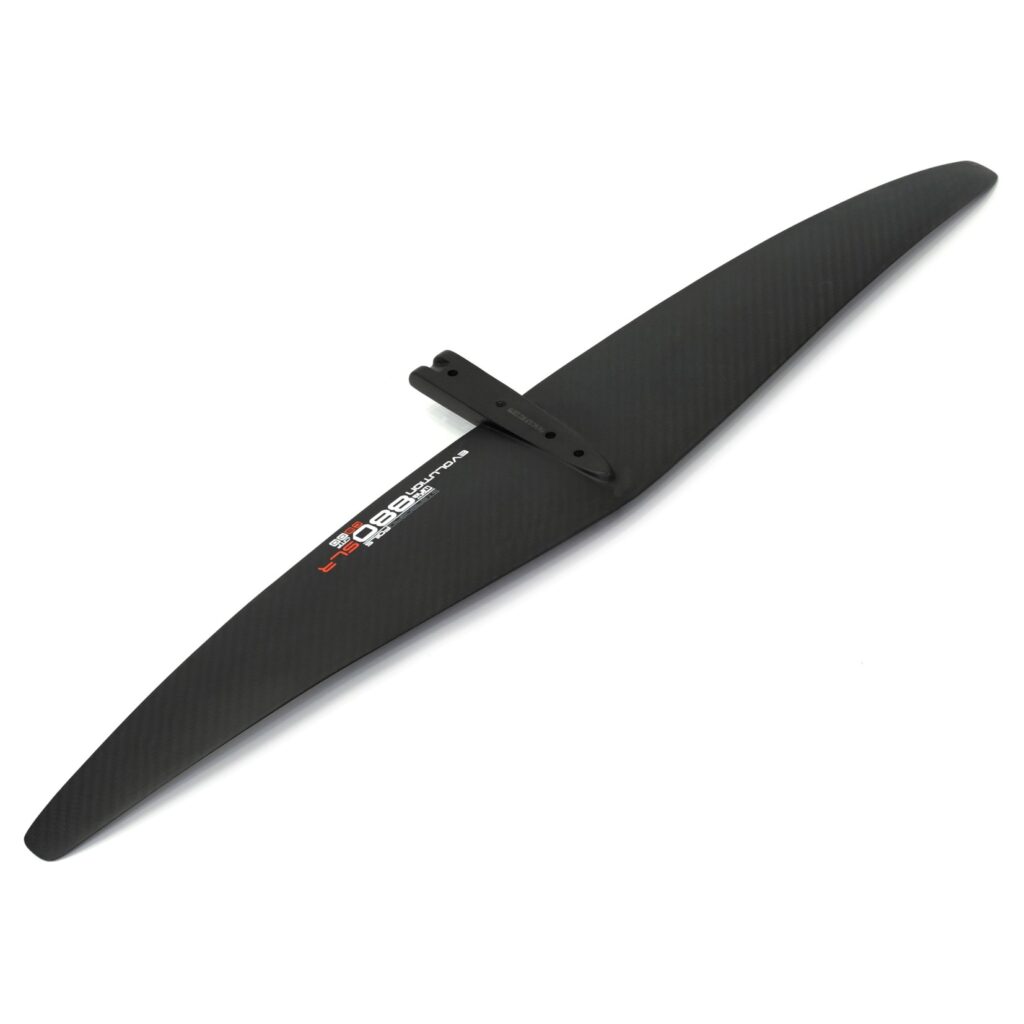
The glide of this front wing is similar to the SLR 750, but the lift in the medium wind range is better dosed, allowing you to push better. We were impressed by the speed with little wind. We reached a speed of over 34 km/h with about 9 knots of wind upwind.
The SLR 880 impresses when it comes to glide and speed, but as with the SLR 750, we can’t push as high to the wind or go deep down wind as we can with the F4 Foils race or Starboard IQfoil carbon. The VMG (Velocity Made Good) of the SLR 880 is simply less, The SLR 880 generates too little lift to push high upwind. Even in the very lower wind range (< 8 knots), the foil gives too little lift to get away as quickly as the aforementioned 2 foils.
Partly due to the enormous wingspan, we noticed with more wind and during the jib that the C400 mast bends and twists quite a bit. For maximum performance with the SLR 880, we recommend going for the Starboard MKII C600 carbon mast
Our findings of the Starboard Race MKII with SLR 880 front wing
- The lift builds up gradually and never becomes too much (back wing spacer is +0.5)
- Due to the very good glide of the mast and of the wing, this foil is fast and in a very wide wind range very well balanced.
- The SLR 880 is much better balanced than the SLR 750 and makes the smaller front wing unnecessary for racing
- Very good and easy (free) race foil
- VMG of this windfoil with the SLR 880 is less than that of the IQfoil carbon or F4 Foils race
Because we find the Starboard Race foil MKII with SLR 880 front wing much better in terms of performance, range and balance, we also offer the Starboard Race MKII foil as a variant with SLR 880 front wing.
Want to try out the Starboard Slalom & Race foil yourself?
Do you want to experience for yourself how the new Starboard slalom and racing foils foil? We have both foils available for testing. Check the ‘Test appointment’ page to see how we work and make an appointment immediately.
-
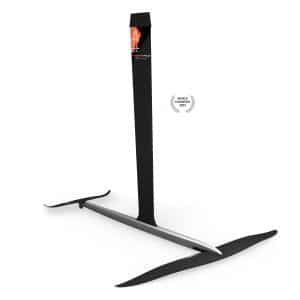
Starboard SLR 2 Race foil
€3.099,00 – €3.499,00 incl. VAT Select options This product has multiple variants. The options may be chosen on the product page -
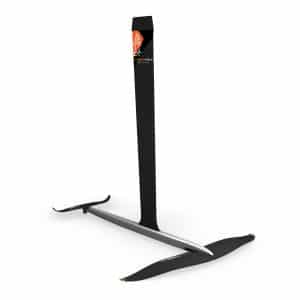
Starboard SLR 2 Slalom
€2.999,00 – €3.399,00 incl. VAT Select options This product has multiple variants. The options may be chosen on the product page


